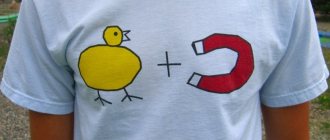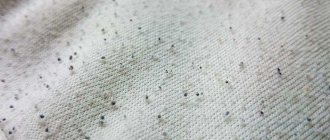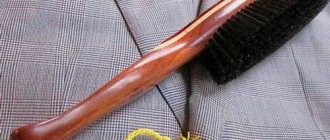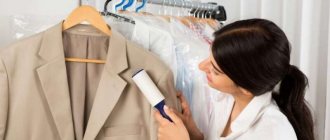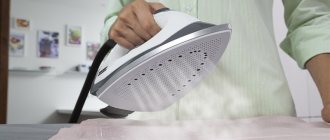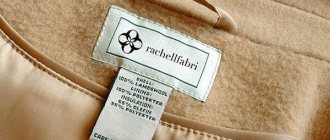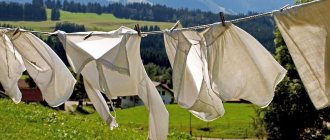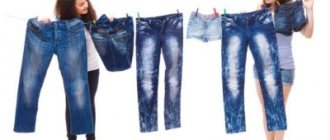Is it worth getting rid of things if the fabric from which it is made begins to fluff and roll into lumps? The appearance has lost its attractiveness, so it becomes impossible to wear clothes. Without regret, skirts and trousers are scrapped if they have served their useful life. But pills can also form on new clothes. For example, a coat. It is not cheap, so throwing away such things is expensive for the budget. In this article you will learn why such defects occur and how to eliminate them.
What are pellets and how are they formed?
Unlike natural wool products, on the surface of which pills form only at the initial stage of wear, synthetic and mixed fibers are prone to persistent pilling, which is practically impossible to remove. Large balls appear on a woolen jacket, scarf or blanket, but they are easy to remove without risking damage to the product.
On synthetic fabrics, which are highly resistant to repeated deformation, removed spools are quickly replaced with new ones. The fabrics most susceptible to pilling are synthetic compositions based on nylon and lavsan fibers.
Long, smooth and very strong fibers, resistant to repeated deformation, despite their positive characteristics, also have a negative property: they are quickly drawn to the surface, where they fluff and roll into very stable balls.
The least prone to pilling are fibers that are unstable to repeated deformation.
The ability to form fiber balls is greatly influenced by the thickness and shape of the cross-section of the fibers. Knowing the weak side of synthetic fabrics, manufacturers combat it by creating profiled fibers, the profiles of which resemble a triangle, square or pentagon in shape.
Thick fibers with an uneven surface provide the material with low pillability. The longer the fiber, the higher the fabric's resistance to pilling.
How to wash in a washing machine without pilling
How to get rid of pilling on clothes and prevent fibers from rolling on the surface of the fabric - to do this, you need to dry washed items indoors or outdoors. Using an automatic dryer is highly not recommended.
If there is a need to use a dryer, select the most delicate mode with a low temperature; drying out clothes is not allowed. Outerwear, as well as items made from expensive or delicate fabrics, must be dry cleaned.
Table of symbols used by manufacturers that indicate the rules for caring for an item:
- Before putting clothes into the machine, they are turned inside out and all zippers are fastened. This measure helps reduce abrasions on the front side.
- Correctly select the washing mode, as well as the temperature and spin method (usually, this information is indicated on a label sewn into the inside of the item).
- The machine drum is not filled to capacity to avoid unnecessary friction.
- Particularly delicate fabrics and items made of wool and acrylic are washed only by hand.
- Sweaters made of wool and angora are hand-twisted, after wrapping them in a sheet, and dried on a flat surface.
- Knitted, flannel or synthetic products should not be mixed with clothing made from other fabrics.
- Abrasive substances are not used for washing; they are replaced with liquid compounds for delicate fabrics. If this is not possible, the abrasive agent is first dissolved in a small amount of water.
- Softening rinses are used for a specific type and color of fabric.
- The delicate mode with the shortest wash cycle duration is set.
Electrified fibers attract microparticles, resulting in increased pillability of the surface. Small balls of foil, which are placed in the machine drum along with the laundry, will help relieve the static tension that occurs when washing synthetic fabrics.
We remove pellets using traditional methods
Next - only the simplest and most harmless methods that do not require any money. By testing you can choose the most suitable one
The key is to approach things with caution.
Razor
The razor method comes in handy most of all when you need to remove uneven surfaces from bed linen and other similar types of fabrics with a smooth surface. Some smooth types of knitwear are also convenient to process using the machine (hats, gloves, mittens, tights, socks). Using a razor to remove pellets from pants or coats is also quite easy. The main thing is not to overdo it with pressure, so as not to permanently ruin the thing.
To remove pellets, you just need to move the shaving machine over the fabric, removing small lumps. The razor should be guided in the direction of the grain to reduce the risk of damage to the threads. After the procedure, simply shake off the item. It is more convenient to remove pills on tights, socks or gloves by putting the item on yourself.
Scissors
Before picking up the scissors, lightly go over the fabric with a massage comb - then it will be easier to remove excess elements. The spools need to be cut off one at a time. You need to hold the scissors in such a way as to remove matted fibers only with the tips. The remaining small fibers can be removed with a razor.
It is tape that is best used when you need to remove defects from a sweater. It will remove lumps that easily come off the surface, without damaging the main fabric. The main condition is that the tape must be wide and highly adhesive, and the pellets must be fresh.
Cut a piece of tape approximately 20 cm long. Glue it to the fabric, smooth it with your hands and wait about 10 seconds. With a quick and sharp movement, tear off the tape, holding the fabric close to the tearing point. So gradually it is necessary to process the whole thing. A new piece of adhesive tape is required each time.
Toothbrush
It is very important when using a toothbrush: to find a balance between strong pressure and light gliding. Although this method is the safest
Pills on thin and delicate, even fluffy things can be removed without fear with this hygienic device
Although this method is the safest. Rolls on thin and delicate, even fluffy items can be removed without fear with this hygienic device.
So, to remove pellets from a sweater, take a medium-hard brush. Even an old one will do. Make a vinegar solution by combining equal amounts of acid and water. Dip a brush in it. Gradually, section by section, treat the problem area with short movements along the grain. Be patient - the process will take you a lot of time. Afterwards, rinse the item in this solution. This will bring back her fluffiness.
A sponge with a hard abrasive part is suitable for processing. There is no need to get it wet, just rub it on the desired area using upward movements along the fibers. Gradually the balls will detach.
Comb
A comb can also combat pellets on things. You need to find one in which the distance between the teeth is minimal. You can simply run along the fibers (in both directions). Most often, most of the lumps remain on the comb. Or you can use it as an auxiliary tool to make it more convenient to remove lumps with nail scissors.
The method can be tried on any type of fabric. You only need to be careful with large knitting. There is a risk of accidentally catching the threads with the teeth.
Roller for clothes
The clothes cleaning roller removes not only excess lint, wool and dust. This handy tool can also remove pellets. The only downside is that the tape, as a rule, is not designed for large and old lumps. But fresh, leaky ones can easily be removed.
In this case, it is more convenient to put the clothes on someone - this will make it easier to treat the surface. As soon as the roller has collected so much lint and pellets that it stops sticking, change the tape.
Sandpaper
Sandpaper is good at removing lumps from clothes made of wool, linen and cotton. It is better not to experiment with it on delicate fabrics.
Crackers
Cleaning clothes from pills with breadcrumbs is an old, rarely used method. However, it is effective. It is also suitable for delicate textiles. Try it yourself!
To be absolutely sure of the result, it is better to make the crackers yourself. Take bread (preferably loose). Cut it into pieces so that it is convenient to hold in your hand when processing. Place them on a baking sheet and place them in the oven over low heat to dry. At each stage of preparation, ensure that the bread is kept away from oil and other fat.
Removing pellets
Despite the availability and large selection of products, removing small lint clumps from the surface of clothing can be an overwhelming task for a person with a weak nervous system. On the other hand, the procedure will be a fun and relaxing activity for women interested in embroidery, painting or decoration.
The picture shows how easy it is to get rid of pills on clothes using a comb.
How to get rid of pilling on clothes (basic rules):
- All manipulations must be performed with extreme care and caution, especially when working with nail scissors, a blade or a razor. One wrong move can ruin the item forever.
- When cleaning the surface, maintain consistency and gradualness so that there are no untreated areas left.
- For convenience, the item is laid out on an ironing board or other accessible smooth surface.
- In order to properly process the surface of the product and not miss anything, good lighting that is comfortable for the eyes is installed at the place of work.
Razor
It is not recommended to use a blade or razor on very fine, loose, grainy or cashmere fabrics. This method is only suitable for cleaning non-embossed wool products. Even a dull or safety razor can easily damage the fibers.
The fabric is laid out on a flat surface, for example, an ironing board, stretched and fixed. The product is carefully shaved, moving in one direction, then the direction of movement of the razor is changed by 90°.
Scissors
An ineffective way to remove fibers that have rolled up on the surface of the fabric. It is not recommended to cut pellets from thin fabrics; it is very likely that after the procedure, microscopic damage will remain on the fibers, invisible to the eye, which will subsequently turn into holes.
Scotch tape
Matted lint can be easily and safely restored to its proper form using a wide strip of adhesive tape. Wide adhesive tape is good for dealing with small loose lumps. A strip of tape of a convenient length is applied to the fabric and passed over it with your hand. With a sharp movement the strip is torn off.
Toothbrush
If there are few balls and they are small enough, they can be easily removed by combing the fabric with a toothbrush. Instead of a brush, it is permissible to use a new sponge for washing dishes: if the sponge is two-part, a coarser texture is used to comb out the pellets. The fabric should be combed along the grain.
Fine-grit sandpaper
The method is only suitable for lint-free fabric. For convenience during manipulations, sandpaper is glued to a small wooden block. The fabric stretched on a flat surface is straightened and fixed, smoothing out the folds. The sandpaper is moved smoothly in one direction, combing the fabric.
Rusks
A piece of hard (not loose) bread 1-2 cm thick is cut off and sent to dry in the oven. A hard cracker is smoothly passed over the surface of the fabric, moving in one direction.
Machine for removing pellets
A sewing machine is one of the best ways to solve the problem: thanks to the adjustment of the cutting height of the fibers, the machine can be used to process a wide variety of fabric surfaces.
When choosing a device for removing rolled fibers, pay attention to the following characteristics:
- Appearance of the device: cheap machines are homemade, the blades and working surface with holes resemble thin foil, the plastic body is not made of high quality.
- Ease of use: the device should fit easily in the hand without weighing it down.
- Capacity of the container for collecting lint: preference is given to a small container, the volume of which will be enough to clean 1-2 things.
High-quality electrical appliances are powered from the mains and/or batteries. The cutter must be equipped with a cutting height regulator. Significant disadvantages of low-quality devices are rapid overheating during operation and short service life of knives.
How to get rid of pills on clothes using a machine:
- The device is plugged in or working batteries are inserted into it and the switch is moved to the operating position.
- Use smooth circular movements to treat problem areas of the tissue.
- After processing is completed, the machine is turned off and the fiber collection tank is cleaned.
- At the final stage, the fabric is combed with a brush.
Roller with adhesive tape
For convenience, you can purchase a reusable sticky roller at any hardware store. The roller is not suitable for removing large pellets from wool and knitwear, as well as small frequent lumps formed on synthetic surfaces.
A roller with adhesive tape is the best choice when the question is not only how to get rid of small pellets in visible places of clothing, but also an easy way to clean the product from small specks and dust.
Comb
The method is suitable for knitted items, but it is not effective for completely removing pills from other fabrics. The pile is carefully combed with a comb with densely spaced teeth, moving in one direction. To cut off fluffy lumps, use nail scissors.
Effective solutions
If you notice that pills have begun to appear on your garment, take immediate action. Thrifty housewives know what to do. Change the detergent, read the instructions, set the temperature correctly on the programmer of the automatic machine and the iron when ironing. Place the products inside the drum inside out. This will prevent the appearance of new defects.
To remove pellets that have already appeared, try one of the following methods:
1. On thick coat fabrics, fine-grained sandpaper helps. Rub the area where the rolled balls appeared.
2. Pants and skirts made of drape, denim, and wool can be cleaned with an old safety razor. Do this carefully, moving along the product so as not to inadvertently cut it.
3. Use a fine-tooth comb only if you are sure there will be no puffs.
4. You can try combing woolen fabrics made from angora or mohair with a toothbrush, guiding it along the fibers. Then wash the product, rinse with vinegar and dry in fresh air.
5. If you are a master at using nail scissors, then the pellets can be carefully cut off.
6. Buy a special machine that will deal with this defect in a matter of minutes. Be sure to carefully read the operating instructions, and only then proceed to work, so as not to damage the product.
With some effort, you can save your favorite item and extend its service life. If you don’t want to waste time on this, go to a dry cleaner, maybe they can solve this problem.
Preventing the appearance of pellets
Before buying clothes, be sure to read the instructions for use and care of the item. On this matter, you can get additional advice from the seller or on the website of the product manufacturer.
It is important to follow the wearing rules: some delicate sweaters, dresses and cardigans are not recommended to be worn under outerwear. Care instructions include cleaning, washing and drying the product. If the label says “hand wash” or “dry clean”, these recommendations should not be ignored.
If the fabric contains a lot of artificial fiber, and the fibers themselves form a loose structure, it will not be possible to completely get rid of pilling. Even if preference is given to an expensive product with high-quality fabric, but with weakly twisted fibers, in the near future such fabric will be covered with small balls.
It is not recommended to buy clothes made of polyester: you should pay attention to the inside tag - if polyester makes up more than 5-10% of the main fiber composition, such fabric will not have a presentable appearance for long. The same rule applies to products made from lavsan, polyamide and nylon.
Lifehack 6 - haircut
If large pills form on clothing, you can simply cut them off with sharp scissors. This is a rather long and labor-intensive process, how to remove pills from a sweater? since you will need to cut off the lumps one by one, one by one. There is also a possibility of damaging wool trousers, a dress or a jacket.
Advice! To make it easier for you to remove pellets, first comb your sweater with a fine-tooth comb. The comb will remove the smallest lumps and it will be easier for you to remove all the remaining pellets.
Fabrics that are prone to pilling
- Wool and knitwear with the addition of synthetic fibers: balls appear on such products very quickly. After several washes and short wear, the appearance of the product leaves much to be desired. Woolen fabrics pill only at the initial stage of wear. Expensive varieties of wool, which are used for sewing men's suits, are generally not prone to pilling.
- Fabrics with very fine artificial textures (curtains, underwear) are susceptible to the formation of hard balls.
- Cotton is a dense woven material made from natural fibers that is not subject to pilling, but its cheaper analogue “polycotton”, which has recently been used for sewing bed linen, very quickly pills and loses its appearance.
- Polycotton is a cheap fabric that is a mixture of cotton and polyester. You can recognize it by the “Cotton 100%” marking.
The fabric should contain a minimum amount of artificial fibers. Of the synthesized materials, compounds with the addition of acrylic are the least likely to roll off. Loose knitwear is very susceptible to pilling. It is better to give preference to knitwear that is as dense as possible.
It is not recommended to rub or twist knitted clothing during hand washing - this will prevent the surface from pilling.
A simple principle will help restore the appearance of a product: do not wait until a large number of pellets make the item unsuitable for wear. As soon as lint balls appear on the surface (usually along seams and in areas of greatest friction), you should immediately use one of the above methods to remove them.
Despite the abundance of products and recommendations on how to get rid of pills that have appeared on the surface of clothing, it is much easier to choose high-quality fabric for sewing. Careful wearing and gentle washing of the product, as well as compliance with the rules for using the fabric indicated by the manufacturer on the label will help prevent fabric pilling.
Author: Svetlana Darenko
Reasons for appearance
More often, pellets appear on soft, loose fabrics with pile or admixtures of polyester, acrylic or nylon fibers. They are located in places of constant friction or interaction with foreign objects. For example, a bag or a backpack.
The reasons may be:
Incorrect care . The washing program, temperature and detergent do not match the type of fabric.- Mixed composition of the material . Susceptible to rolling in tandem synthetic and natural fibers.
- Density and structure of fabric . Threads of medium and weak twist, weak weaving, as a result - a loose fabric that quickly loses its appearance.
Before blaming the manufacturer, carefully study the composition and recommendations on the product label. It will help you find the cause of the problem.

